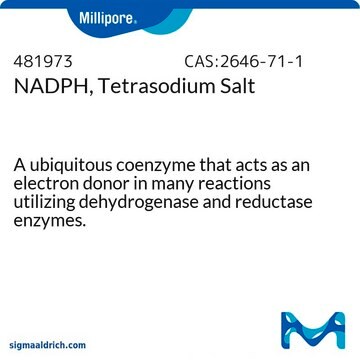19359
Glucose dehydrogenase from Pseudomonas sp.
powder, white, ≥200 U/mg
Synonym(s):
GDH
About This Item
Recommended Products
biological source
bacterial (Pseudomonas spp.)
form
powder
specific activity
≥200 U/mg
greener alternative product characteristics
Waste Prevention
Design for Energy Efficiency
Learn more about the Principles of Green Chemistry.
sustainability
Greener Alternative Product
color
white
greener alternative category
, Enabling
storage temp.
−20°C
General description
Application
Biochem/physiol Actions
Unit Definition
Storage Class Code
11 - Combustible Solids
WGK
WGK 3
Flash Point(F)
Not applicable
Flash Point(C)
Not applicable
Personal Protective Equipment
Regulatory Listings
Regulatory Listings are mainly provided for chemical products. Only limited information can be provided here for non-chemical products. No entry means none of the components are listed. It is the user’s obligation to ensure the safe and legal use of the product.
JAN Code
19359-10MG-F:
19359-VAR-F:
19359-BULK-F:
Certificates of Analysis (COA)
Search for Certificates of Analysis (COA) by entering the products Lot/Batch Number. Lot and Batch Numbers can be found on a product’s label following the words ‘Lot’ or ‘Batch’.
Already Own This Product?
Find documentation for the products that you have recently purchased in the Document Library.
Our team of scientists has experience in all areas of research including Life Science, Material Science, Chemical Synthesis, Chromatography, Analytical and many others.
Contact Technical Service








